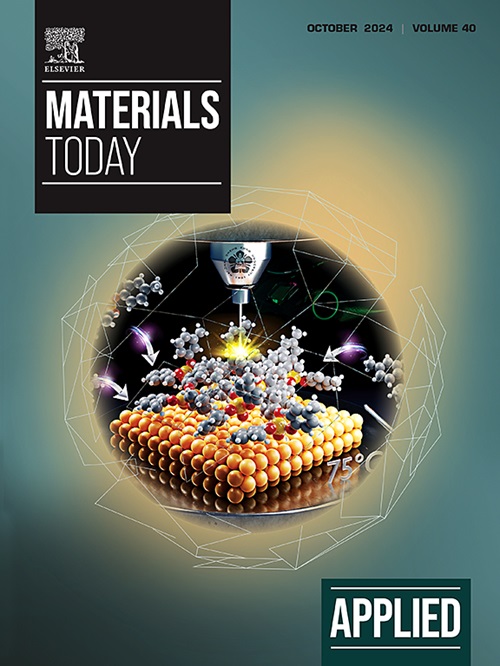可编程材料:当前趋势、挑战和前景
IF 6.9
2区 材料科学
Q1 MATERIALS SCIENCE, MULTIDISCIPLINARY
引用次数: 0
摘要
自九十年代首次引入 "可编程 "一词以来,对可编程材料的研究引起了人们的极大兴趣。从最广泛的定义来看,该术语是指按需设计的材料,其形状和/或物理/功能特性都具有高度的动态性,而且是以精确、按顺序的预定方式进行设计的。这种独特的特性使其能够适应各种需求,并在多个应用领域提供了新的机遇,使其能够克服传统材料的局限性。本文旨在向读者介绍可编程材料的世界,提高读者对该领域的兴趣、知识和技能,并就如何开发和实施可编程材料提供有益的见解和新思路。因此,本文概述并讨论了当前的先进技术和最新进展,以及未来展望。首先,本文介绍了这些材料的历史演变和定义,以及可实现的可编程特性类型。然后,介绍可用于调整材料特性的不同编程策略,重点是组成材料、应用刺激和几何排列。最后,还讨论了这类令人兴奋的材料在现实世界中的应用、目前面临的挑战以及未来的发展方向。本文章由计算机程序翻译,如有差异,请以英文原文为准。
Programmable materials: Current trends, challenges, and perspectives
Research into programmable materials has attracted extraordinary interest since the nineties, when the term “programmable” was introduced for the first time. In its widest definition, the term is used to denote materials that are designed to be highly dynamic, either in shape and/or physical/functional properties, on-demand and in a precise, sequential predetermined way. Such unique feature allows them to adapt to various needs and offers new opportunities in several application fields, enabling them to overcome the limitations of traditional materials. The present paper aims to introduce readers to the world of programmable materials, enhance their interest, knowledge, and skills in the field, and provide useful insights and new ideas on how to approach their development and implementation. Accordingly, this paper offers an overview and discussion of current state-of-the-art and recent progress up to future perspectives. First, the historical evolution and definition of these materials as well as the types of programmable properties achievable are presented. Then, the different programming strategies that could be used to tune material properties are covered, with an emphasis on the constituent materials, applied stimuli, and geometrical arrangements. Finally, real-world applications, ongoing challenges, and future directions for this exciting class of materials are discussed.
求助全文
通过发布文献求助,成功后即可免费获取论文全文。
去求助
来源期刊

Applied Materials Today
Materials Science-General Materials Science
CiteScore
14.90
自引率
3.60%
发文量
393
审稿时长
26 days
期刊介绍:
Journal Name: Applied Materials Today
Focus:
Multi-disciplinary, rapid-publication journal
Focused on cutting-edge applications of novel materials
Overview:
New materials discoveries have led to exciting fundamental breakthroughs.
Materials research is now moving towards the translation of these scientific properties and principles.
 求助内容:
求助内容: 应助结果提醒方式:
应助结果提醒方式:


